
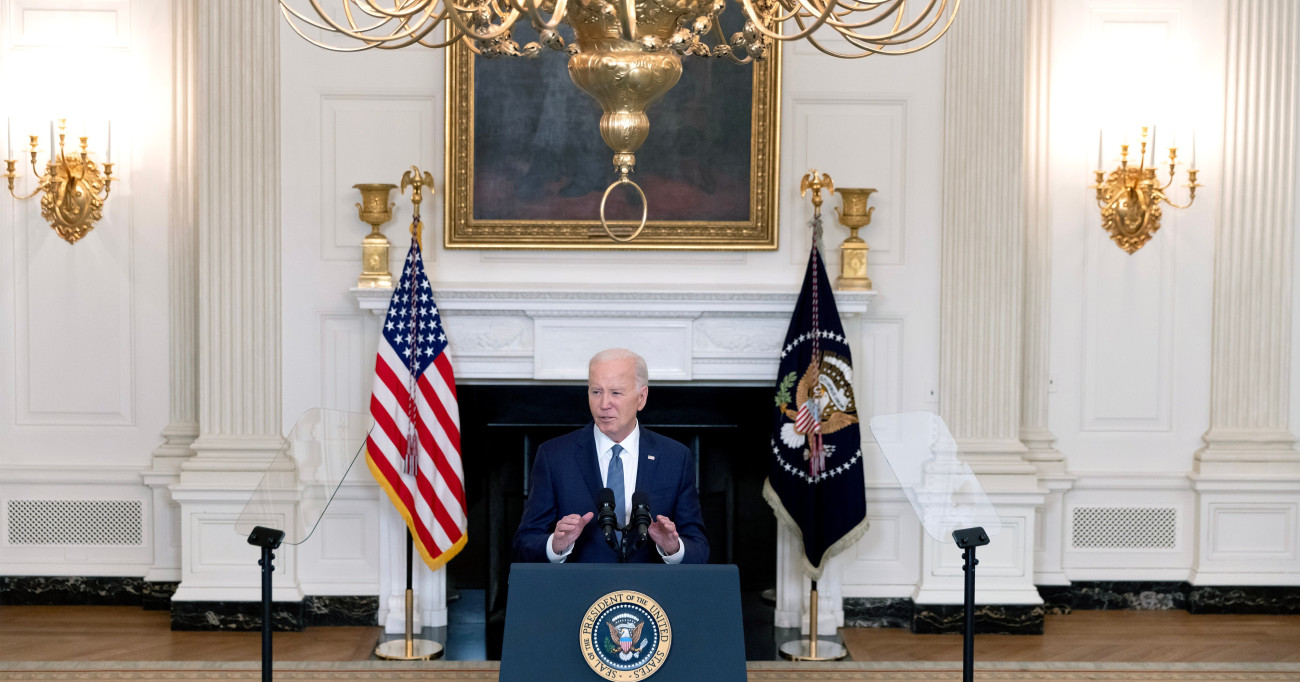
In reaction to the Oct. 7 Hamas attack on Israel and the subsequent Gaza war, the Biden administration articulated a short list of objectives to support its ally, prevent the conflict from spreading, and end the fighting. After nine months, the Biden administration's success toward achieving these goals has mostly declined, not for a lack of effort but rather a reflection of considerable challenges in the environment and major shortcomings in policy conceptualization and implementation.
The following report assesses the US government’s success and failures in meeting its goals over the past three months. It represents the independent analytical judgments of one scholar at the Middle East Institute based on his policy research and research support from two key colleagues, as well as the independent feedback from colleagues in a peer review process.
Executive Summary
-
In reaction to the Oct. 7 Hamas attack on Israel and the subsequent Gaza war, the Biden administration articulated six main objectives, in order of importance:
-
Support Israel’s self-defense and objective of eliminating the threat posed by Hamas;
-
Secure the safe return of hostages;
-
Prevent a wider regional war;
-
Protect civilians caught in the crossfire;
-
Respond to a growing humanitarian crisis in Gaza; and
-
Create a post-war plan for reconstruction leading to a two-state solution and wider regional normalization efforts in coordination with regional and international partners.
-
-
The Biden administration did not achieve significant progress toward meeting its own policy goals in this period. It prioritized a cease-fire deal and hostage release, even as it continued to back Israel’s self-defense and dedicate considerable resources to preventing a wider regional war. President Joe Biden released a three-phase plan on May 31, in an effort to set a public framework for a cease-fire that could lead to wider regional stabilization efforts.
-
In many ways, these past three months of US policy in the Middle East have typified the Biden administration’s effort to place diplomacy at the center of its foreign policy overall, as it articulated upon entering office in 2021, in a series of speeches and documents that stressed the importance of leading with diplomacy first in its national security approach. Yet the Biden administration’s lack of synchronization of diplomacy with security tools, combined with the enduring reality that many actors in the Middle East prioritize military force and terrorism over diplomacy to maintain power and shape the landscape, are key factors explaining why the Biden team has not yet achieved major breakthroughs.
-
The United States is a critical player in negotiations and has committed considerable diplomatic effort to the crisis, in addition to its role as the unrivaled security partner of many countries in the region. Nevertheless, the Biden administration has remained unable to incentivize Israel or Hamas to accept the full terms of a cease-fire deal and begin implementation. Israeli Prime Minister Benjamin Netanyahu’s desire to remain in power and Hamas’ insistence on using hostages as maximum leverage have enabled this deadlock to persist through this reporting period.
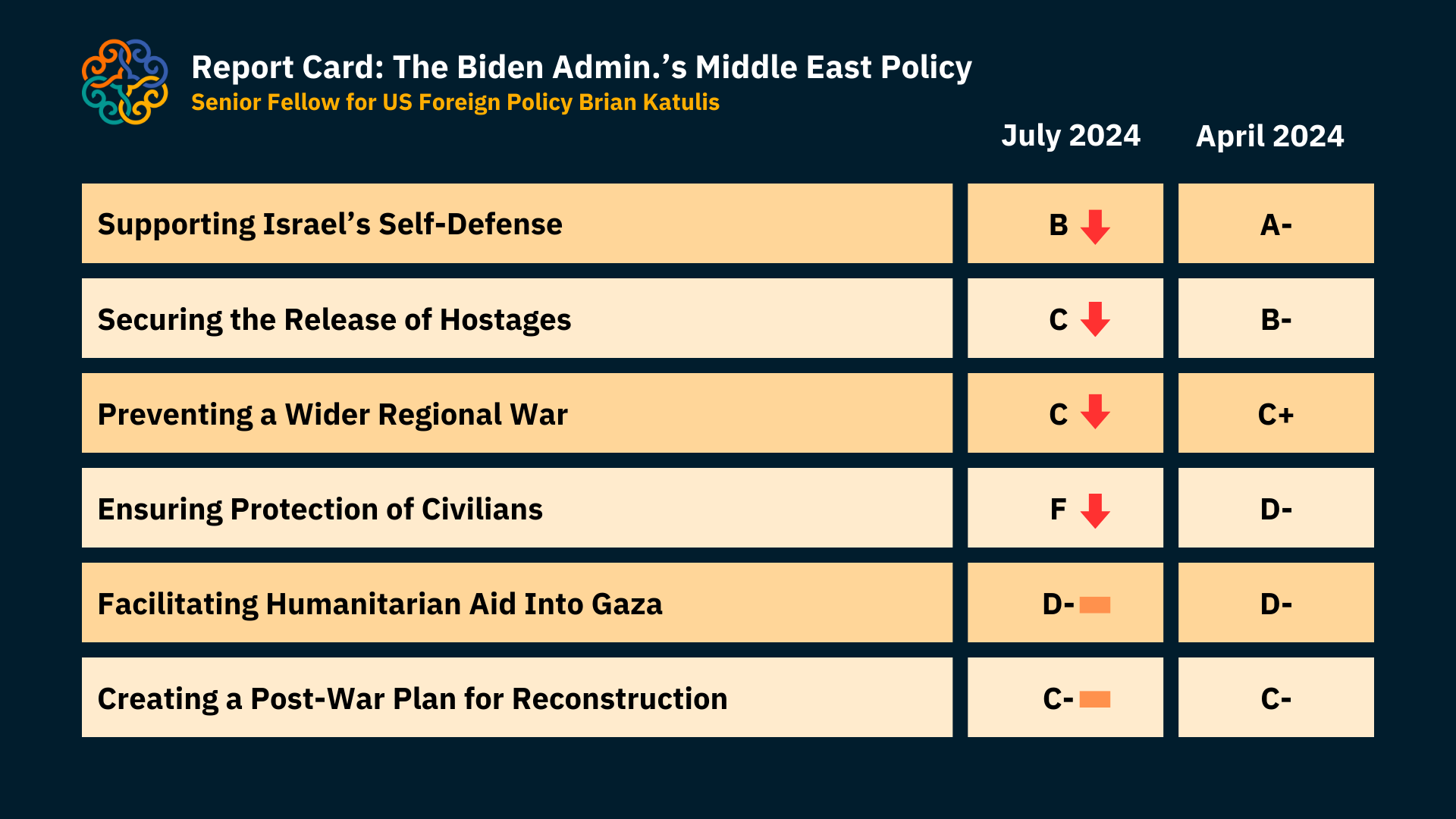
-
Between April and July, the Biden administration’s relative success in pursuing its stated objectives related to the Gaza war suffered a decline in four of the six categories compared to the previous period, analyzed in the first six months of the war. These declines in performance were not for a lack of effort but rather a reflection of considerable challenges in the environment and major shortcomings in policy conceptualization and implementation. The grades this report gives the administration on how well it has met each of its six objectives are not based on effort or intent but rather outcome, and the outcomes remain modest.
-
This report is part of a series of reports attempting to clinically analyze US policy in the Middle East that have included thus far:
-
An initial assessment of Biden’s approach to the Middle East from 2021 to 2023, released in September 2023:
Treading Cautiously on Shifting Sands: An Assessment of Biden’s Middle East Policy Approach, 2021-2023 | Middle East Institute (mei.edu) -
An assessment of Biden’s Middle East approach six months into the Gaza War, released in April 2024:
The Biden Administration’s Middle East Policy at a Time of War: An Assessment of US Policy Six Months Into the Israel-Hamas War | Middle East Institute (mei.edu)
-
-
The report covers the three-month period from mid-April to mid-July 2024. One major event highlighted in the April 2024 report, Iran’s attack against Israel and its counter-response, is mentioned once again in this report because of its importance and also because it occurred just before the previous report was released. The report was written prior to President Biden’s decision not to seek reelection.
-
This particular assessment represents the independent analytical judgments of one scholar at the Middle East Institute based on his policy research and research support from two key colleagues, as well as the independent feedback from colleagues in a peer review process.
Supporting Israel’s Self-Defense, Including Eliminating the Security Threat Posed by Hamas
-
Overall Grade for US Policy: B
-
The Biden administration continued to provide extraordinary support to Israel’s self-defense and its goal of eliminating the security threat posed by the terrorist group Hamas by placing few if any limits on arms shipments, military cooperation, and intelligence support. Nevertheless, the overall security environment for Israel did not substantially improve in this period, and some fronts, including its northern border, continued to deteriorate.
-
Despite previously referring to an operation in Rafah as a “red line” that would result in a curtailment of US backing, President Biden has continued to support Israel with weapons since the Rafah offensive began in early May. Overall, the quantity of American arms shipments to Israel has slowed since the early months of the war, but this is mostly due to fewer Israeli requests and the depreciating need for types of weapons that have already been delivered. The United States maintains that the pace of deliveries is higher than peacetime levels. The political uproar in mid-May over a pause in delivery from the US to Israel was more representative of political dysfunction and divisions inside both countries than the weight of the actual policy move by the Biden administration. The Biden administration notably changed course and agreed to resume shipments of those bombs to Israel. Israeli and American officials seem to have different interpretations of what the “red lines” of the Biden administration on the Rafah operations were; but in any case, they did not seem to have a major impact on Israel’s military operations there this spring.
-
While much of the security threat posed by Hamas has diminished as Israel’s actions rendered it incapable of launching another large-scale attack, at least in the short term, the overall security situation in Israel has worsened in recent weeks because of a rise in tensions along the northern border with Lebanon, where 60,000 Israelis and 90,000 Lebanese have been displaced. Israel’s biggest security threat is now Hezbollah, and Iran by proxy. Yemen’s Houthi fighters have also continued to threaten critical global shipping routes, sinking a ship and setting another on fire in June, using anti-ship ballistic missiles to strike naval and maritime targets. The group also claimed credit for a July 19 drone attack on an apartment block in Tel Aviv that killed one person.
-
Conclusion: The Biden administration’s support for Israel’s self-defense remained fairly consistent since Oct. 7, but this support has not substantially improved the security environment, and Israel has not restored deterrence from attack by its regional adversaries or fully eliminated Hamas as a security threat.
Securing the Release of Hostages Held by Hamas in Gaza
-
Overall Grade for US Policy: C
-
America continues to play a central role in negotiations to end the conflict and facilitate the return of hostages held by Hamas. President Biden publicly articulated a plan on May 31 that outlined a three-phase process linking a cease-fire and hostage release to wider diplomatic efforts to stabilize the region. By mid-July, this plan had not achieved the desired outcomes.
-
Two hundred and fifty-five Israeli and foreign hostages were taken on Oct. 7, and more than 100 hostages were released as a result of the November cease-fire deal. As of early July, 120 hostages remain unaccounted for, including five Americans, and Israel believes more than 40 of those remaining hostages have died in captivity, including three Americans.
-
The pursuit of a hostage release and cease-fire deal has been riddled with confusion, speculation, leaks, and frustration. Most notably, on May 6, Hamas told the Qatari prime minister and Egyptian intelligence chief that the group accepted the terms for a cease-fire. Celebrations broke out in the streets of Gaza until shortly after, when Israel rejected the deal, claiming that the terms of the proposal had been changed without coordination.
-
Four hostages were rescued in a covert military operation in Gaza on June 8, after Israeli intelligence received a tip that hostages were being held in residential apartments in Nuseirat. The US military and a team of American hostage recovery officials were instrumental in providing intelligence and logistical support for the extraction. The Hamas-run Health Ministry in Gaza, however, indicated that 274 Palestinians, including women and children (and combatants), were killed during the daytime operation. The Israel Defense Forces (IDF) maintain that their troops came under heavy fire and had to respond.
-
Secretary of State Antony Blinken traveled twice to the region during this reporting period to meet with officials to discuss progress toward a cease-fire deal and the release of hostages, as well as engage regional partners on efforts to advance regional security coordination and keep the prospects of Saudi-Israeli normalization alive. Central Intelligence Agency (CIA) Director Bill Burns and top Middle East White House official Brett McGurk conducted multiple trips to the region and Europe in efforts to advance a cease-fire and hostage release deal, working in coordination with Qatar and Egypt.
-
Conclusion: The United States remains active in discussions with Egyptian and Qatari interlocutors to bring the hostages home to their families. It also continues to provide intelligence about the whereabouts and status of hostages that was crucial for the covert operation. But in the last three months, the rescue operation represents the only significant development on the hostage front.
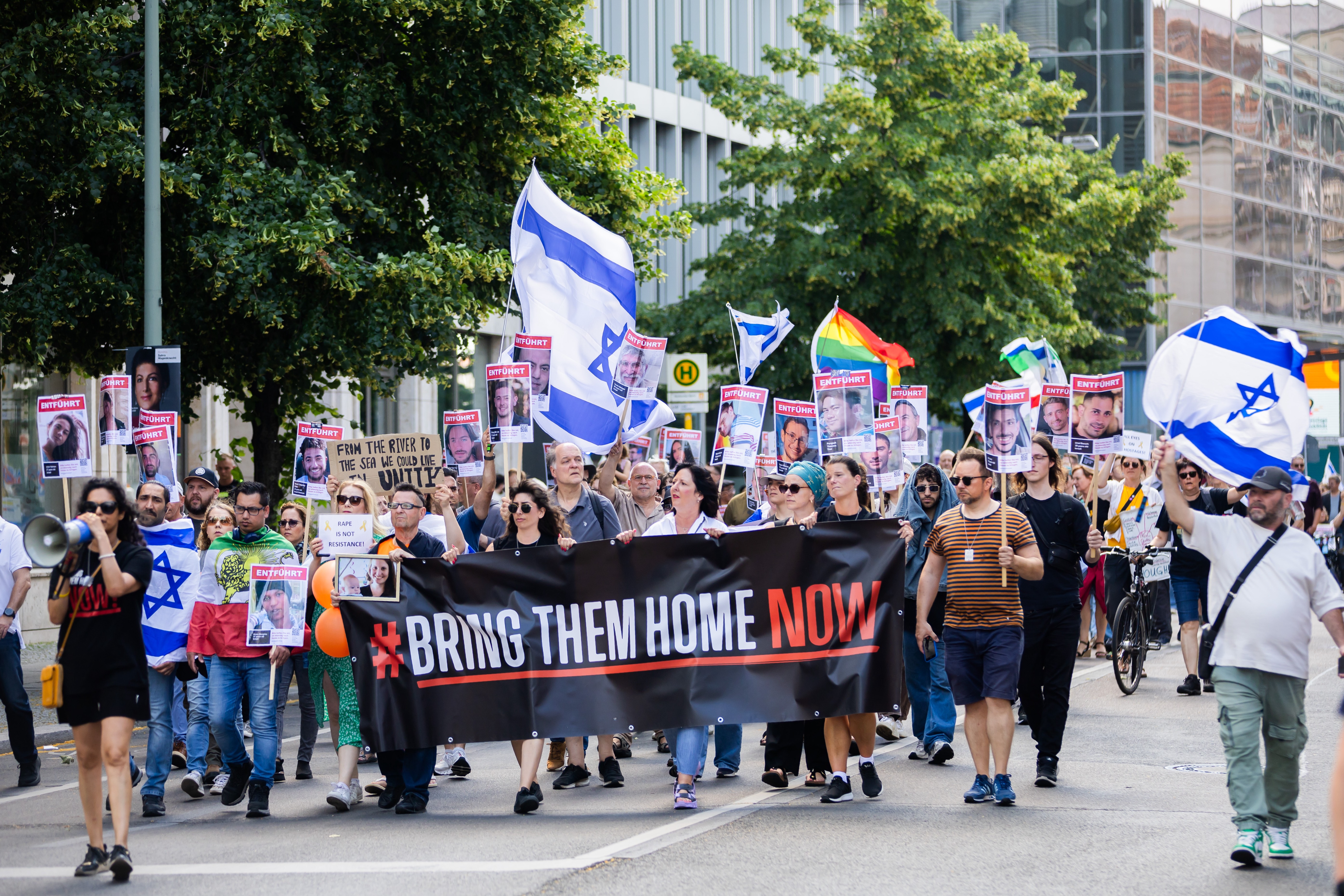
Preventing a Wider Regional War
-
Overall Grade for US Policy: C
-
The United States played a pivotal role in helping defend Israel in the mid-April attack Iran launched in retaliation to an Israeli strike in Damascus against Iranian operatives. The United States helped coordinate region-wide defensive measures, and it also helped Israel calibrate its response to Iran’s attack to avoid a wider escalation.
-
The potential for full-fledged conflict between Israel and Hezbollah has come to a slow boil. Israel killed a top Hezbollah commander on June 11, and the Lebanese militant group responded by launching hundreds of missiles into northern Israel. Israel and Hezbollah have exchanged salvos every day since the start of the war, barring the cease-fire in November. Since April, there have been over 400 attacks carried out by Hezbollah and 1,700 attacks carried out by Israel.
-
Estimates suggest that Hezbollah has stockpiled an increasingly sophisticated arsenal of over 150,000 stand-off weapons in Lebanon and Syria. This is enough to generate upwards of 10,000 casualties even with the Iron Dome at full operational capacity by overwhelming the air-defense system or evading radar detection altogether. Hezbollah reportedly has approximately 30,000 active-duty fighters and up to 20,000 reserves at its disposal, and they all have significant experience from Hezbollah’s previous involvement in Syria. Hezbollah has also constructed an intricate tunnel system dwarfing the network built by Hamas.
-
All the while, Israeli Defense Minister Yoav Gallant threatened to take Lebanon “back to the Stone Age,” whereas Iran has threatened an “obliterating war” if Israel launches a full-scale military aggression in Lebanon. A direct confrontation with the largest and most powerful non-state actor, Hezbollah, would be far deadlier than the current conflict in Gaza and runs the risk of drawing in Syria and Iran. The nightmare scenario is that Hezbollah has learned from Hamas’ recent successes and, in the event of a pre-emptive first strike, will take hostages and shuttle them back across Israel’s northern border.
-
As tensions on the Israeli-Lebanese border have grown, the Yemeni Houthis have become increasingly effective at targeting vessels in the Red and Mediterranean seas with ballistic missiles, drones, and booby-trapped boats. In June, the Houthi attacks on merchant vessels were at their highest since December. The US Navy redeployed an aircraft carrier from the Indo-Pacific to the Red Sea on July 12, in an attempt to “deter aggression, promote regional stability, and protect the free flow of commerce in the region.” The July 19 drone attack on Tel Aviv claimed by the Houthis, followed a day later by an Israeli counterstrike on the Yemeni port of Hodeidah, is another sign that the regional security situation has not improved.
-
The security situation in key parts of Syria and Iraq remains quite uncertain as well, and US troops remain present to respond to an enduring threat from the Islamic State, which has increased in recent months. At the same time, Iran and its regional network continue to pose a security threat to the United States and its partners in the Middle East.
-
In July, Iran’s acting Foreign Minister Ali Bagheri confirmed that Oman-brokered backchannel negotiations between the US were still ongoing. In May, McGurk held indirect talks with Bagheri through Omani officials, aimed at preventing a regional escalation.
-
Special Envoy Amos Hochstein, a key member of Biden’s team, has been actively engaged in diplomacy aimed at avoiding a full-blown war between Israel and Hezbollah in Lebanon. In June, he traveled to both Israel and Lebanon to meet with Strategic Affairs Minister Ron Dermer, Cabinet Secretary Tzachi Braverman, Military Secretary Roman Goffman, political advisor Ofir Fleck, and US Deputy Ambassador to Israel Stephanie Hallett. In Lebanon, he reiterated calls for an urgent end to Israeli-Hezbollah escalation. There, he met with Commander of the Lebanese Armed Forces Joseph Aoun, Parliament Speaker Nabih Berri, and caretaker Prime Minister Najib Mikati.
-
Conclusion: The United States has stepped up its military engagement in the Middle East in response to threats posed by Iran and its network of partners. It coupled these military moves with multiple diplomatic efforts aimed at preventing a broader regional war. Neither Israel nor Hezbollah seem to want a war, but both sides continue to test the limits of bigger escalation. The United States has a short-term strategic goal of preventing escalation, but it does not appear to have a coherent framework for long-term deterrence of Iran and its network, and it has not yet resolved the tensions between efforts to deter Iran versus those to de-escalate the situation with it.
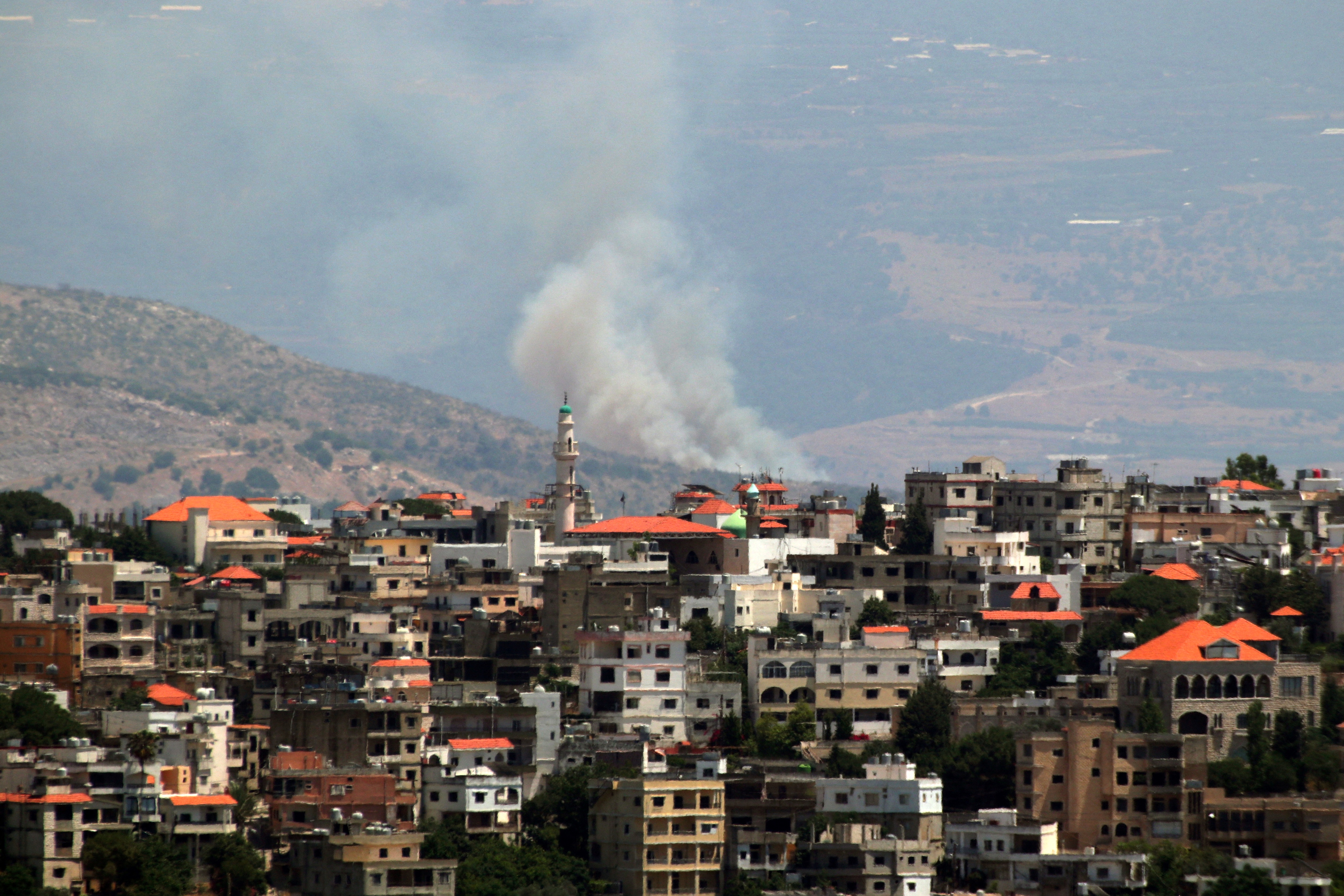
Ensuring Protection of Civilians
-
Overall Grade for US Policy: F
-
The Biden administration continued to raise concerns about the loss of civilian lives in the Israel-Hamas war, but it is difficult to pinpoint measures or outcomes that demonstrated any meaningful impact from these messaging efforts. The mounting civilian casualties and deaths reflected the complications of war against a terrorist group (Hamas) that demonstrates little concern for the loss of life and a state (Israel) struggling to come up with a military approach capable of producing a more sustainable and lasting sense of security with a clearly defined political end state. The gap between the Biden administration’s values-based foreign policy rhetoric on civilian protection and what has unfolded in the Israel-Hamas war is glaring, just as it is in Russia’s war against Ukraine.
-
The number of casualties in Gaza has been difficult to assess due to disparities between reports from the Gaza Health Ministry run by Hamas, international organizations, and the Israeli government. As of July 8, the US Agency for International Development (USAID) reported 38,193 deaths, up from around 30,000 recorded fatal casualties in mid-April. The Biden administration has so far been unable to pressure the Israeli government to significantly alter its tactics and mitigate civilian deaths.
-
An estimated 1.9 million people have been displaced in Gaza since Oct. 7 and there is still a grave need for humanitarian assistance for more than 2 million Palestinians, half of whom are children, in the form of food, fuel, potable water, medicine, and medical attention.
-
In early July, the outgoing head of Israel’s central command, Maj. Gen. Yehuda Fox, condemned the government’s expansion of settlements in the occupied West Bank. In his departure ceremony, Fox alleged that Israeli settlers have engaged in “nationalist crime” in the West Bank that sows chaos and fear and targets Palestinian residents who pose no threat. Since the start of the war, at least 553 Palestinians have been killed in the West Bank. The US has imposed sanctions on Israeli settlers and organizations responsible for and connected to acts of violence against civilians in the West Bank, but the efficacy of the sanctions remains to be seen.
-
Conclusion: The war in Gaza continues to be a humanitarian disaster, and security for Palestinians in the West Bank and East Jerusalem remains tenuous. Israel has not yet substantially altered its strategy even as Hamas continues to use hostages and innocent civilians as protection to remain in power. The civilian situation in Palestine is unlikely to improve without a permanent cease-fire deal.
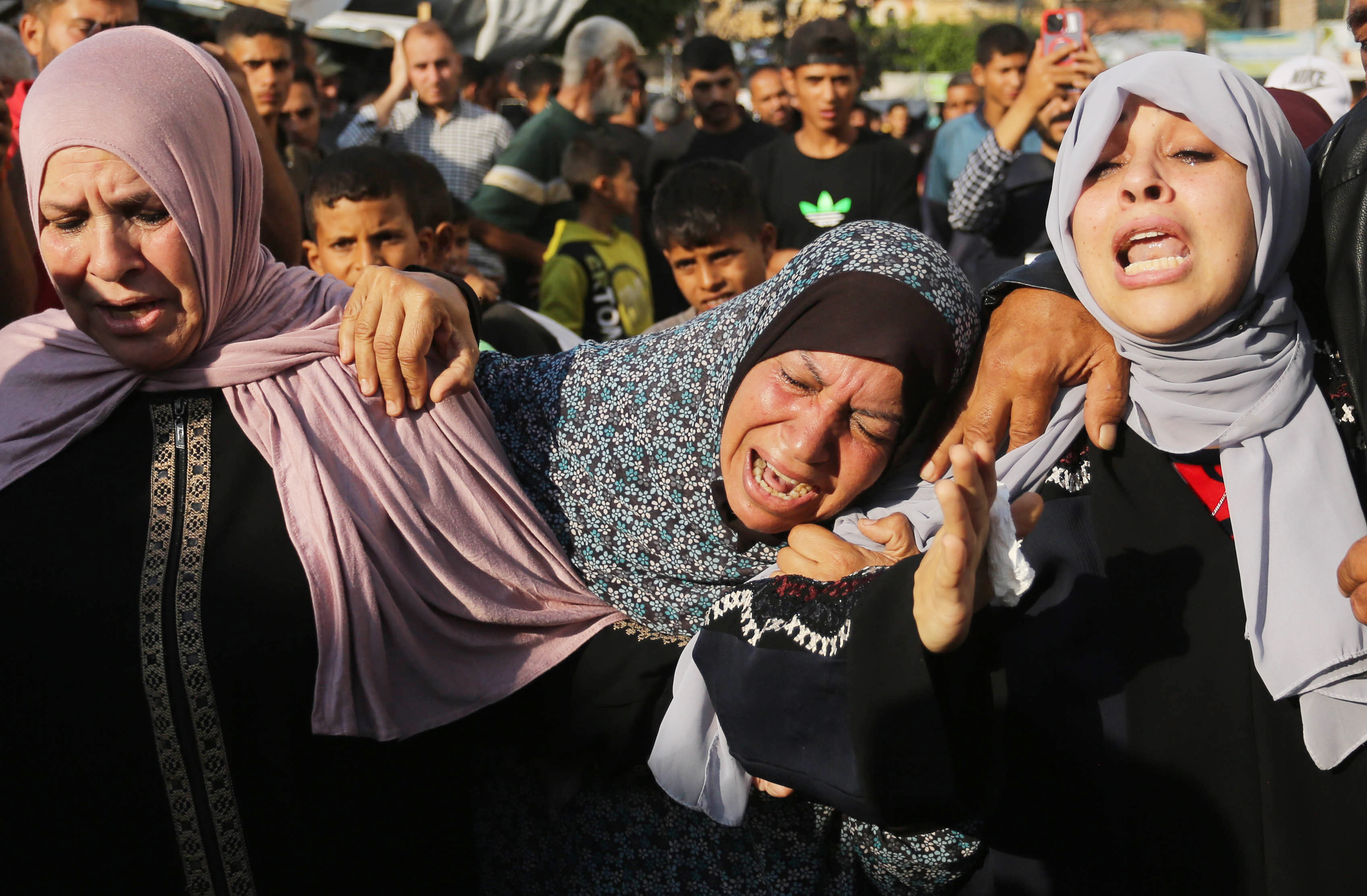
Facilitating Humanitarian Aid Into Gaza
-
Overall Grade for US Policy: D-
-
The Biden administration remained a key leader in the international and regional push to increase the flow of humanitarian aid to Palestinians living in Gaza. US diplomats remained central to diplomatic and security efforts to expand the avenues for aid delivery, but these efforts did not produce substantial breakthroughs during the reporting period. Land border routes for delivering aid that were opened up faced closures due to Israeli military operations and conflict, and quiet diplomacy continues to resolve some thorny questions related to who controls the border between the Gaza Strip and Egypt.
-
In mid-May, the US military built a $230 million temporary pier on the Gaza coast to deliver aid to civilians. More than 8,800 metric tons of aid were delivered to Gaza before rough seas detached the pier was in late June, the second time it was taken offline since its installment. By early July, this pier project was permanently removed and abandoned.
-
There was an uptick in humanitarian aid in March and April, but overall aid has slowed since the Rafah border crossing, a critical access point for humanitarian aid delivery, was closed on May 6, when Israel mounted an offensive in the area. Gazans have also suffered from a lack of security of humanitarian aid as Hamas and rival gangs commandeered distribution, preventing the aid from reaching those who need it most.
-
As of late June, 96% of the population in Gaza was facing acute food shortages with nearly 500,000 people, children included, facing starvation. Ninety-seven percent of the water from Gaza’s aquifer fails to meet the quality standards of the World Health Organization, and only 10% of Gazans have access to safe and clean drinking water in their homes.
-
Conclusion: There has been no significant change in the access that Gazans receive to food, aid, and water. When it was operational, the temporary pier constructed by the United States proved to be nothing more than a band-aid on a bullet hole. Gazans are facing starvation at higher rates with no long-term solution in sight. With much of Gaza’s infrastructure completely destroyed, it has become nearly impossible to pipe even unsafe drinking water into what is left of people’s homes. Any immediate improvement to all of these necessities, in addition to medical supplies, can likely only occur if Israel scales down operations dramatically and a temporary cease-fire is agreed upon.
Creating a Post-War Plan for Reconstruction Leading to a Two-State Solution and Wider Regional Normalization Efforts
-
Overall Grade: C-
-
The United States continued to play a leading role in working to set an international and regional framework for the post-conflict situation in Gaza. Key diplomats quietly engaged counterparts in the Middle East and Europe.
-
The United States will need to rely heavily on the involvement of other Arab states to help finance and facilitate a reconstruction strategy in the Gaza Strip. Gulf states, such as Saudi Arabia, the United Arab Emirates, Qatar, Kuwait, and Bahrain, appear prepared to help but want guarantees that the money will be used to improve the lives of Palestinians and not be squandered and laundered by a future Palestinian leadership. In addition, these countries are unlikely to contribute the level of resources required for reconstruction without a more stable security environment, as they do not want to devote substantial resources to reconstruction if another war destroys what is built in the next phase. These countries also demand a clear pathway to a Palestinian state, something the current Israeli government rejects.
-
The prospects of a cease-fire deal took another blow when Gen. Benny Gantz resigned from Israel’s war cabinet on June 9. Gantz cited Netanyahu’s mismanagement of the war and refusal to draft a feasible post-war plan as his reason for stepping down. Netanyahu dissolved the war cabinet shortly after Gantz’s resignation.
-
The broader aspirations outlined in Phases 2 and 3 of the Biden plan, along with the hopes for a Saudi-Israeli normalization deal, hinge on the establishment of a Palestinian state, something the current government in Israel rejects.
-
Conclusion: The Biden administration outlined a plan publicly that seeks to link the efforts to resolve the immediate conflict resolution challenges with a long-term plan for Gaza’s reconstruction, in addition to wider efforts to foster increased regional integration. But the long-term planning and diplomatic efforts remain in their nascent stages, as the crisis diplomacy focused on achieving a cease-fire and hostage release has understandably been the higher priority.
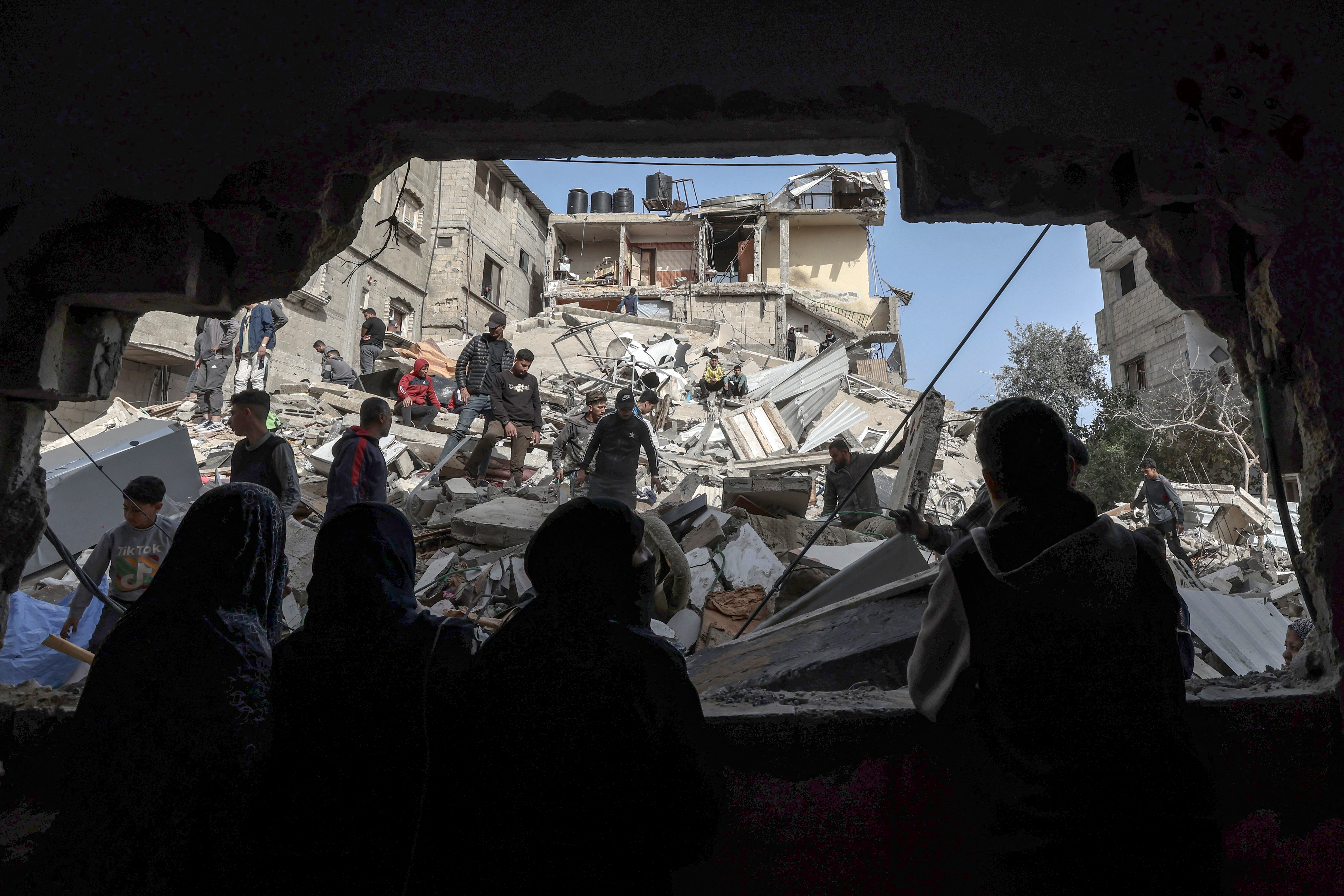
Key Judgments
-
US diplomacy to end the Israel-Hamas war and build a wider framework for diplomacy remains hampered by the motivations and incentives of the main combatants. The Biden administration’s effort to prioritize diplomacy in the Israel-Hamas war and the conflict between Israel and Hezbollah is important but may be insufficient to end and prevent wider conflict without a more coherent regional strategy. A key factor that complicates the efforts to prioritize diplomacy over security measures is the simple fact that key parties see benefit from continuing the conflict. Both Hamas and the current Israeli government reject the two-state solution that the Biden administration has articulated as the long-term goal of US policy.
-
Managing the tensions between competing policy priorities remains difficult. Achieving progress toward advancing the six key policy objectives outlined by the Biden administration is complicated by the fact that efforts to achieve progress on some fronts are sometimes at odds with efforts to achieve progress on other fronts. In addition, the Biden administration may be making the same mistake successive US administrations have made on other foreign policy issues: trying to do too many things at once.
-
Wider regional integration moves, including a Saudi-Israeli normalization deal, will likely remain elusive as long as the Israel-Hamas conflict rages on and wider regional security tensions with Hezbollah and the Houthis persist. Regional actors have a strong interest in preventing a wider war, and they also face domestic pressures from citizens across the Arab world outraged by the death and destruction in Gaza. Saudi Arabia has become particularly cautious in its foreign policy approach in recent years, and Israel’s rejection of a state of Palestine will put a ceiling on the opportunities for progress.
-
Deterring Iran and de-escalating with Iran are two different goals. These two goals may be at odds with each other given Iran’s actions to destabilize the region.
-
America’s domestic political debate about the Middle East has mostly been irrelevant in shaping policy outcomes and results on the ground. Despite the considerable time, energy, and attention the Israel-Hamas war has received in mostly elite circles in America, ordinary Americans do not prioritize this issue compared to other more pressing domestic matters, and the protests relating to the war have not generated major shifts in the Biden administration’s approach.
-
Actors in the region will continue to be the main drivers of events. The United States remains the most important external actor in the Middle East, but it would be a mistake to overstate how much it can shape and influence events there. The Biden administration’s inability to achieve its goals, including the immediate objectives of a cease-fire and hostage release, demonstrates the limits of US power and influence.
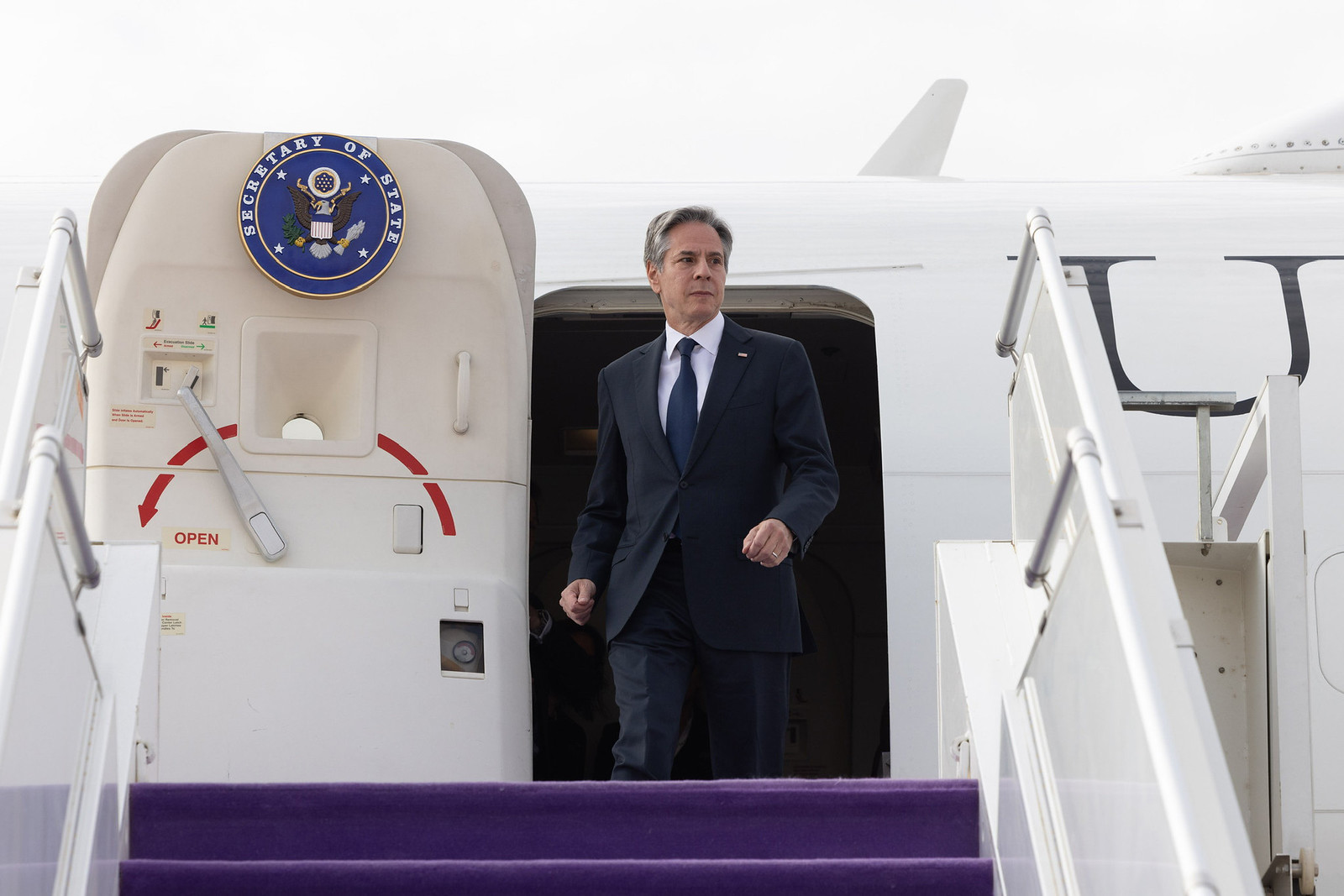
Conclusions and Recommendations
This grim but realistic assessment of US policy could easily lend itself to despair and induce paralysis. But the United States should examine this record and take two steps necessary to increase the odds for success toward achieving its goals:
- It should step up its engagement in the region, rather than withdraw as some voices have argued for years. In particular, Washington should assign more senior personnel and empower them to engage with regional partners working to resolve conflicts and plan for the post-conflict situation.
- It should develop contingency plans in case the current approach — centered on achieving the cease-fire and hostage release deal as the first step that President Biden outlined on May 31 — does not produce the intended results.
Brian Katulis is Senior Fellow for US Foreign Policy and Senior Advisor to the President of the Middle East Institute.
Benjamin Freedman is the Policy Center Assistant at the Middle East Institute. Prior to joining MEI, he received a Bachelor’s Degree in International Relations and a Minor in Arabic Studies from the Elliott School of International Affairs at George Washington University.
Sydney Taylor is a summer 2024 Research Assistant on US Foreign Policy in the Middle East at the Middle East Institute, and she is pursuing a Master in Public Affairs with a concentration in international relations at Princeton’s School of Public and International Affairs. She holds a BA in Security & Intelligence and Middle East Studies and was a Fulbright English Teaching Assistant in Saudi Arabia in 2022-2023.
Photo at the top: US President Joe Biden speaks in the White House State Dining Room on Friday, May 31, 2024. Biden laid out a three-phase plan to set a public framework for a cease-fire that could lead to wider regional stabilization efforts. Photo by Michael Reynolds/EPA/Bloomberg via Getty Images.
Acknowledgments
This report represents the independent analytical judgments of one scholar, with research support from two colleagues at the Middle East Institute, based on his policy research and feedback from colleagues and peers.
The author would like to thank colleagues and peers who took time to review a draft of this report and offer comments including Zeina AlShaib, Matthew Czekaj, Nimrod Goren, Thomas Halvorsen, Ammon Harteis, Charles Lister, Fadi Nicholas Nassar, Paul Salem, Elliott Sanders, Susan Saxton, Alistair Taylor, and Marvin G. Weinbaum.











